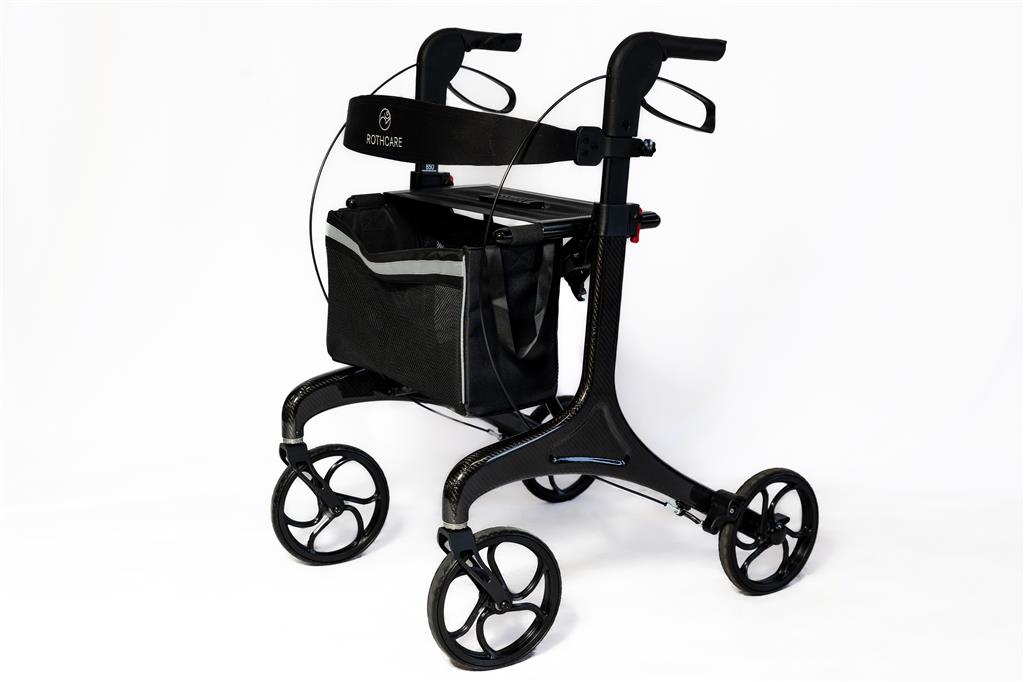How to Choose the Best Rollator: Tips for Finding the Right Walker for Your Needs
When it comes to maintaining independence and mobility, rollators — also known as walkers with wheels — are one of the most popular and practical mobility aids. Unlike traditional walkers, rollators offer greater flexibility, ease of use, and features like hand brakes and built-in seats. But with so many models on the market, how do you choose the right one?
Here are our top tips to help you find the best rollator for your needs or for a loved one.
1. Understand Your Needs
Start by thinking about how and where the rollator will be used. Key questions to ask yourself include:
-
Will it be used mainly indoors, outdoors, or both?
-
Do you need a seat for resting?
-
Will you be transporting it in a car?
-
Is stability or maneuverability more important?
The answers to these questions will help narrow down the best type of rollator.
2. Choose the Right Wheel Size
Rollators come with different wheel sizes, typically ranging from 6 to 10 inches:
-
Smaller wheels (6–8 inches) are great for indoor use, especially in tight spaces like bathrooms or hallways.
-
Larger wheels (8–10 inches) handle outdoor terrain better and offer smoother movement over uneven surfaces.
If you are active and plan to walk outdoors often, opt for a larger wheel rollator.
3. Check the Height Adjustability
The rollator should suit your height. Most models offer adjustable handles, and when adjusted correctly, the handles should align with your wrist when your arms are relaxed at your sides. Poor posture or strain on the arms can be avoided with proper height alignment.
4. Consider the Weight and Portability
If the rollator needs to be lifted in and out of a car, then weight is a key factor. Lightweight rollators made from aluminium (or even lighter carbon fiber) are easier to handle, while still being strong and stable. Also, check how compactly the rollator folds—some models fold side-to-side, others front-to-back, which can affect storage options.
5. Test the Brakes
Good brakes are essential for safety. Look for ergonomic hand brakes that are easy to squeeze and lock, especially if you have arthritis or reduced hand strength. Always test the brakes before buying to ensure they feel secure and responsive.
6. Evaluate the Seat and Backrest
If you need frequent rest stops, a built-in seat and padded backrest are essential. Make sure the seat is wide enough and positioned at a comfortable height. Some rollators also offer removable cushions or extra storage under the seat.
7. Check for Storage Options
Many rollators come with storage baskets, pouches, or bags—great for carrying personal items, shopping, or medical supplies. If you will be out and about, this can reduce the need for carrying an additional bag.
8. Match the Rollator to Your Lifestyle
There are specialised rollators for different needs:
-
Heavy-duty rollators for bariatric users
-
Narrow rollators for smaller frames or tight spaces
-
All-terrain rollators for active users who enjoy the outdoors
Choosing a model that fits your day-to-day life will ensure the rollator becomes a helpful tool, not a frustrating obstacle.
Final Tip: Try Before You Buy
Whenever possible, visit a mobility showroom and test out a few rollators. Getting a feel for how a rollator handles and fits can make all the difference. At Perth Mobility, our friendly team is always happy to help you find the perfect fit, with expert advice and a wide range of models to choose from.
Need help choosing the right rollator?
Contact us or visit our showroom to explore our range and get professional guidance tailored to your needs.







